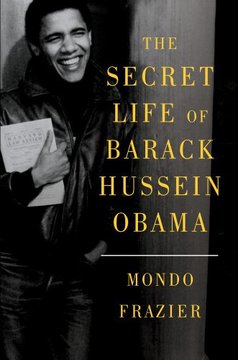CNN's "Thingamajig":
"Live Audience Reaction" Graphic
Flat-lined at the Presidential Debates
StinkyJournalism

The similarity of CNN's "Live Audience Reaction" meter to the vital sign monitors in a hospital is unmistakable. Everyone knows from TV --"Doctor, come quickly. Code blue!"-- that flat lines in wave form graphics spell death for a hospital patients. But what the heck do the same flat lines mean for viewers watching the presidential debates?
The "Audience Reaction" meter – three colored lines at the bottom of the CNN News screen during the debates – combined with the enforced audience silence to provide a surprising effect: I felt slightly anxious and kept looking for signs of life.
Was I watching dying patients in the hospital with the mostly flat-lined and smoothly flowing and colorful wave forms? And what exactly was being measured anyway? My busy CNN television screen did not say.
Even media bloggers had no clue
MyChances.net asked, "Anyone have any idea how the little scrolling ‘Audience Reaction' is measured? CNN has one trend-line for independents, republicans, and democrats, and I'm not sure where they're getting those numbers."
Speculation abounded on the Web. SteveK on Media Bistro agreed that the meter "is fairly difficult to decipher."
At Yahoo! Answers, Austin M said, "CNN has chosen 3 audience members to give their reactions to CNN by giving them through a pulse machine. This is possible by seeing their pulse and looking at how it rises and lowers based on the questions asked. Also, those same people have a handheld device where they press 1 of three buttons meaning plus a little, minus a little, or back to neutral. (Used after each question.) Hope this helps."
Not really, Austin, but thanks.
Dennis left a comment on MyChance.net " with this CNN link which gives a partial answer: ' Voters watch the debate from Columbus, Ohio, and give their reaction to the responses in real-time.' But how this is done is not clear; nor is it stated how they gauge who is republican, democratic, or independent (presumably self-identification)."
Even the Wall Street Journal 's "Numbers Guy" couldn't enumerate--literally. He wrote, "Beneath the candidates, reaction from 32 undecided focus-group members in Ohio was presented graphically rather than numerically...reaction, positive or negative, was displayed as a rising or falling line."
The answer was from Ernanio was the best: "They have a bunch of potential voters from OHIO seated in a room with a dial thingamajig on their hands that when rotated can go from 0 - 100 to show how much they are liking the candidates intervention."
[Photo RIGHT: Some bloggers mistakenly thought the audience reaction meter measured pulse rates of the focus group. Here StinkyJournalism illustrates what a focus group member would look like, had it been true.]
What the heck was the thingamajig? Will CNN keep using it on the next two presidential debates?
So what does CNN News say?
I wrote to Edie Emery, in media relations at CNN, seeking answers. She kindly e-mailed me CNN's press release. It explained (emphasis mine):
Continue reading: CNN's "Thingamajig": "Live Audience Reaction" Graphic Flat-lined at the Presidential Debates
by Rhonda R. Shearer
images: Stinky Journalism
Source: CNN's "Thingamajig": "Live Audience Reaction" Graphic Flat-lined at the Presidential Debates

src="http://d.yimg.com/ds/badge2.js"
badgetype="small-votes">
ARTICLEURL






























No comments:
Post a Comment
Leave your name/nic.
We've changed the comments section to allow non-registered users to comment.
We'll continue like that until it's being abused.
We reserve the right to delete all abusive or otherwise inappropriate comments.